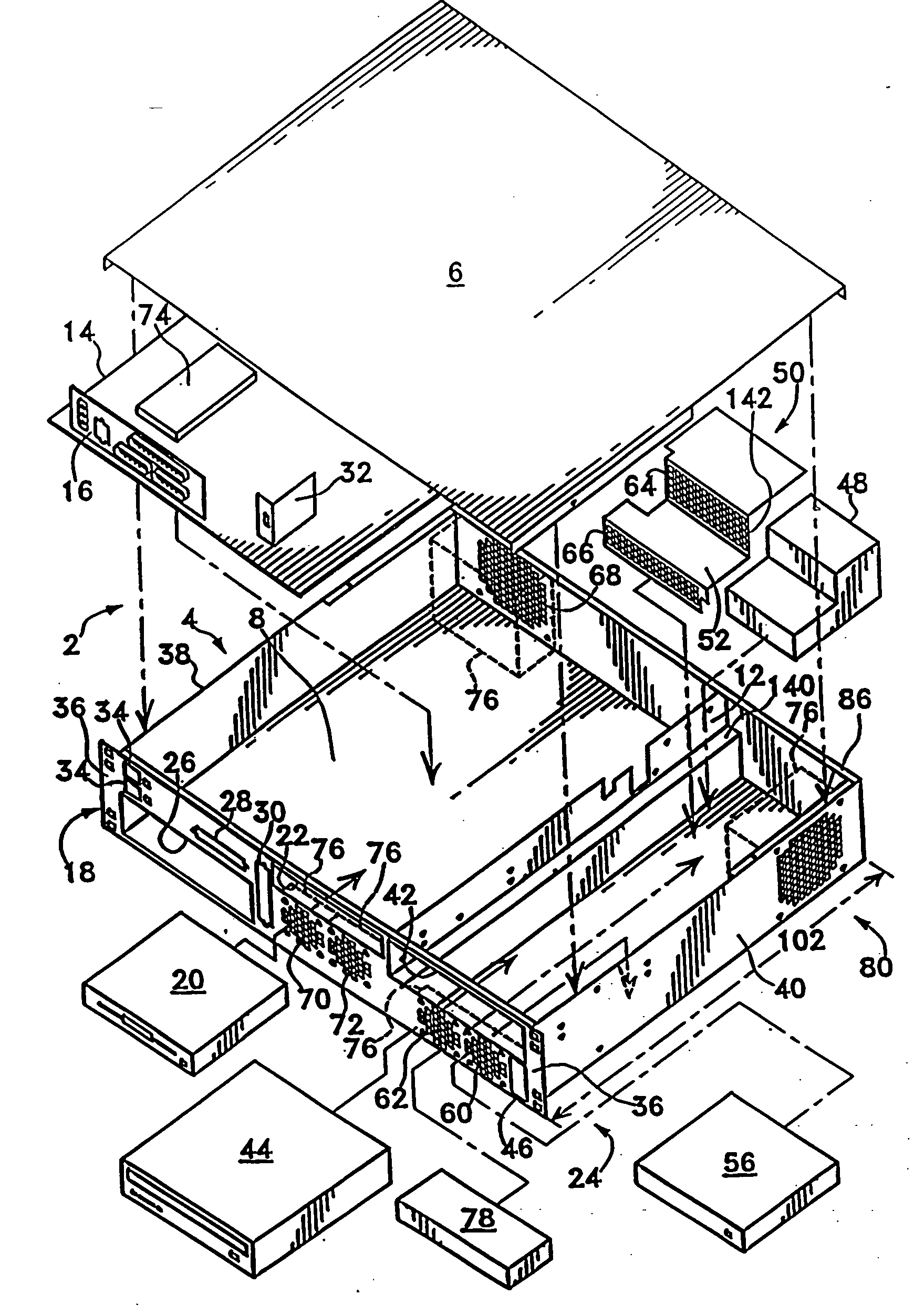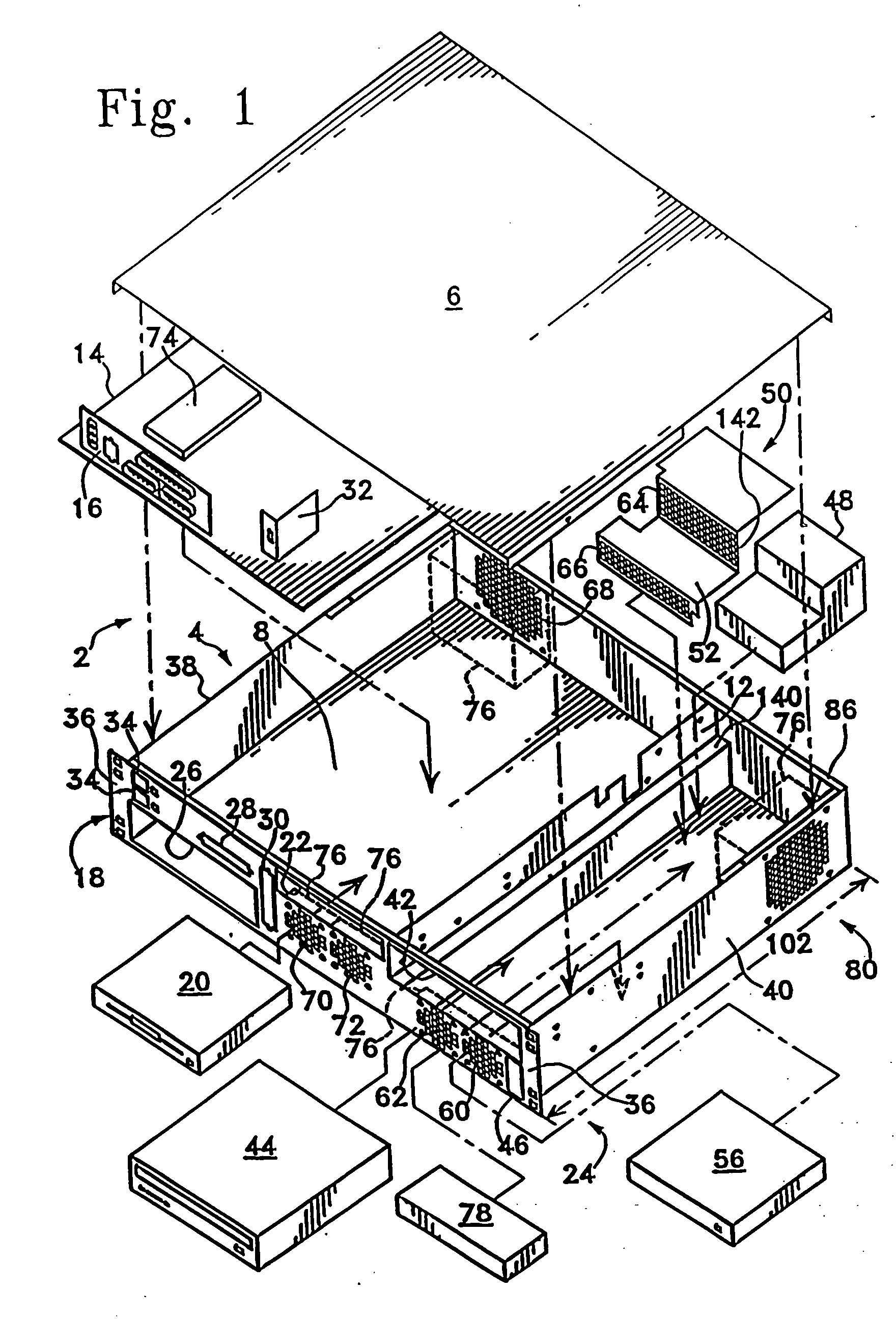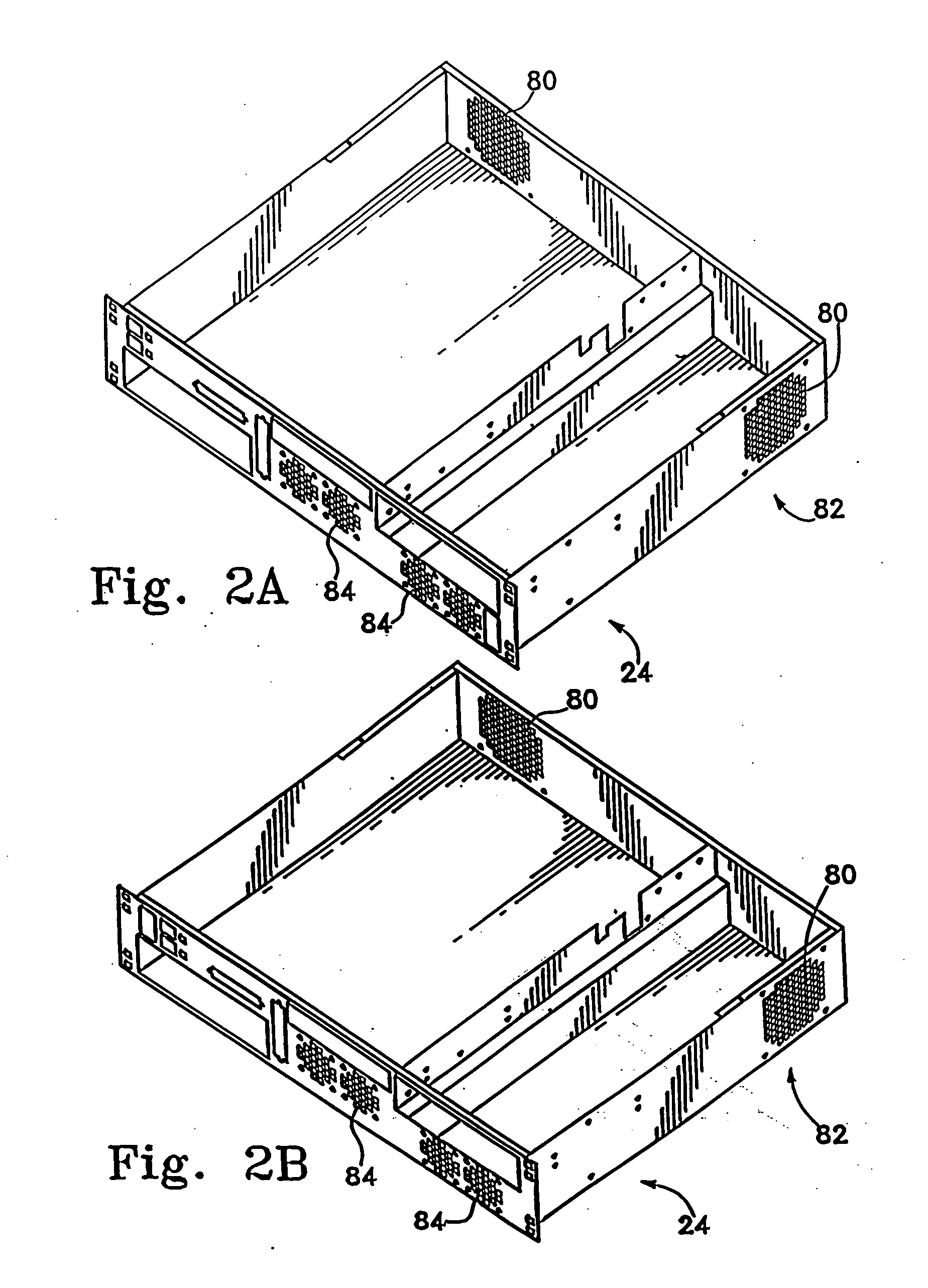High density computer equipment storage system
a computer equipment and high density technology, applied in the direction of electrical apparatus construction details, instruments, electrical apparatus casings/cabinets/drawers, etc., can solve the problems of high cost, uneconomical optimization performance, and broader competition between standard components, so as to achieve the effect of increasing the density of computer equipmen
- Summary
- Abstract
- Description
- Claims
- Application Information
AI Technical Summary
Benefits of technology
Problems solved by technology
Method used
Image
Examples
Embodiment Construction
[0031]FIG. 1 shows a configuration of the inventive chassis as it may be assembled with standard components. Although the use of standard components is preferred, of course, none of the components must be so. The chassis 2 will usually include a chassis body 4 and a chassis cover 6. A main board compartment 8, and a power supply compartment 10 separated by a baffle 12 are optionally provided. Preferably, the main board compartment 8 is sized to fit an ATX form factor main board 14. Preferred main boards include models N44BX, L44GX, 810, 810E and C440GX by Intel, Inc. Such main boards typically include an I / O shield 16. The chassis 2, is preferably made of zinc plated mild steel sheet metal, with the front panel 18 painted. Rivets, welds or other suitable fastening methods may be used to secure various components and hold the chassis body 4 in shape.
[0032] The main board compartment 8 is preferably of a height sufficient to include room for a 3.5 inch disk drive 20 above main board ...
PUM
 Login to View More
Login to View More Abstract
Description
Claims
Application Information
 Login to View More
Login to View More - R&D
- Intellectual Property
- Life Sciences
- Materials
- Tech Scout
- Unparalleled Data Quality
- Higher Quality Content
- 60% Fewer Hallucinations
Browse by: Latest US Patents, China's latest patents, Technical Efficacy Thesaurus, Application Domain, Technology Topic, Popular Technical Reports.
© 2025 PatSnap. All rights reserved.Legal|Privacy policy|Modern Slavery Act Transparency Statement|Sitemap|About US| Contact US: help@patsnap.com



